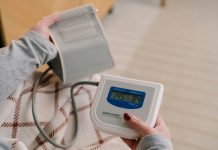
Blood pressure is a key sign of how well your body is working. It measures how hard your blood pushes against the walls of your arteries as it moves through your body. When your blood pressure is normal, it means your heart is pumping well and your organs are getting enough oxygen and nutrients. But when your blood pressure gets too high, it can become dangerous.
This condition is called high blood pressure, or hypertension. It’s often referred to as the “silent killer” because it usually doesn’t cause any clear symptoms at first.
Many people don’t even know they have it until it leads to serious problems like a heart attack, stroke, or kidney failure. That’s why it’s so important to understand what happens when blood pressure rises to dangerous levels—and what signs to look out for.
A hypertensive crisis is a medical emergency. It happens when your blood pressure spikes to 180/120 mm Hg or higher. At this point, the risk of damage to your heart, brain, kidneys, or eyes becomes very high.
If this happens, you may start to notice serious symptoms. One of the most common signs is a sudden, severe headache—often described as one of the worst headaches a person has ever felt. You might also feel chest pain, which can happen if the heart is struggling to get enough oxygen.
Trouble breathing is another warning sign. When blood pressure is too high, the heart has to work harder, which can affect the lungs and make it feel like you can’t catch your breath. Some people also get nosebleeds during a hypertensive crisis. While nosebleeds can have many causes, in this situation they often come on suddenly and are hard to stop.
Severe anxiety or a strong feeling that something is very wrong is another possible symptom. This is often the body’s reaction to the stress caused by the dangerously high blood pressure.
You might also notice changes in your vision, such as blurriness or seeing double. In some cases, there can even be a loss of vision. Feeling sick to your stomach or vomiting can also happen, especially when these symptoms appear alongside others.
If you or someone you know experiences any of these symptoms, it’s important to call emergency services right away. A hypertensive crisis can cause permanent damage to the body—or even be life-threatening—if not treated quickly.
The tricky part is that many people with high blood pressure don’t have any symptoms at all. This is why regular blood pressure checks are so important, especially if you have risk factors like a family history of heart disease, being overweight, eating too much salt, or not getting enough exercise.
The good news is that high blood pressure can often be prevented or controlled. Making healthy lifestyle choices makes a big difference. Eating more fruits and vegetables, cutting back on salt, staying active, avoiding smoking, and limiting alcohol can all help keep your blood pressure in a safe range.
If you’ve been prescribed medication for high blood pressure, it’s important to take it exactly as your doctor tells you. Monitoring your blood pressure at home can also help you stay on track and notice any changes early.
In short, learning to spot the symptoms of dangerously high blood pressure and making healthy changes to your lifestyle can protect you from serious health problems. Stay informed, get regular checkups, and don’t ignore the warning signs—your heart and your body will thank you.
If you care about high blood pressure, please read studies that early time-restricted eating could help improve blood pressure, and natural coconut sugar could help reduce blood pressure and artery stiffness.
For more health information, please see recent studies about added sugar in your diet linked to higher blood pressure, and results showing vitamin D could improve blood pressure in people with diabetes.
Copyright © 2025 Knowridge Science Report. All rights reserved.



